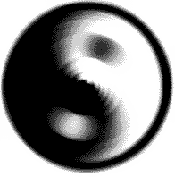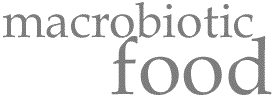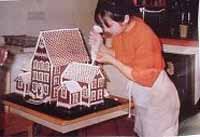|

|

-Masami Sato
I am going to work at a restaurant
where the menu is Macrobiotic. Macrobiotic diet is a very simple diet which
comes from Japanese traditional diet, yet very different from the diet we have in Japan. But I found
that it was the same kind of food we were having when I lived in a country side of Japan
learning organic farming (1998). We ate simple food directly harvested from our farms. It was mainly grain - in our case brown rice
we grew and stored to be consumed all year, seasonal vegetable and also some processed food like pickles and dried or fermented food.
Macrobiotic is not only about the food or diet but about total understanding of life. The life force and the rule of nature. I found things in common in Ayurveda although it has different concept.
The Yin and Yang of food
Macrobiotic divides things into two different side, yin and yang. Everything exist in this world has the tendency to have more yin or yang. Things can be more yin then others or opposite. There is no complete yin or yang because everything has both aspects, but different.

What's yin and what's yang
Yin is an energy which is cold, heavy, expanded and moist. Like the vegetable and fruit that grow in hot climate can me more yin. On the other hand, yang is hot, light, contracted and dry. Most of animal products are strong yang. In the middle is balanced food like whole grains and cereals. It is important to have diet which is balanced so that our bodies do not have to adjust making effort, taking a lot of stress within. And it is better to have more centred food than both strong yin and yang food to balance. But some people need a little more yin food than others while others need more yang, and it is of course depend on season and the living environment as well, even mental condition and time of the day affect.
Macrobiotic food and Ayurveda
In ayurvedic diet, there are three doshas - Pita, Kapha, Vata. All these have different tendency from others and the diet is to balance these three doshas within our body as our body itself has different dosha combination.
I am very amazed at the science of traditional eating. They both suggest vegetarian diet, yet macrobiotic suggest vagan except small amount of fish can be occasionally taken. Because all animal product is strong yang, it is difficult to balance. We will feel craving for sugar or unseasonable tropical fruit to try to balance.
 Masami feedback & faqs ? Masami feedback & faqs ?
Is my food balanced?
It used to be as easy as our daily life routine to cook Macrobiotic food for Japanese women before. We did not have many ingredients to cook with, so we did not even have to make choices, and things have changed. We have everything from all the country of different climate and we do not even know which season they are grown or if they are our native food or not. As we have become aware of some serious problem of our unbalanced diet nowadays, we are trying to change out diet again. So, let's go back to the ancient eating to follow our native wisdom !
|
Travel
Muthathi
Amazing
holiday and fishing spot on river Cauvery a few hors from Bangalore.
Malgudi (Agumbe)
Lapog
tries to explore the magic of RK Narayan's / Shankar Nag's Malgudi.
Travel Archives

Masami's
trip of the Pacific Rim countries - 1999
A personal account by DBT crony Masami
Main story

Become God
without screwing up
|
| Yin and yang
This symbol, commonly known as the T’ai Chi Chu symbol, or Yin-Yang symbol has its roots in ancient Chinese cosmology. The original meaning of "yin and yang" is representative of the mountains--both the dark side and the bright side, or the contrasting shaded and sunlight slopes of the mountain. The "Yin" represents the female or the shaded aspect, the earth, darkness, the moon, and passivity. The "Yang" represents the male, light, sun, heaven, the active principle in nature.
The Yin Yang School was founded by Tsou Yen, Han Dynasty (206B.C.-A.D. 220). It combines the ancient philosophy of the 5 elements-- wood, fire, earth, metal,
water. The yin and yang only represent opposite poles NOT good or evil.
|




 Masami
Masami 